Jianshu Ji
The Microsoft Toolkit of Multi-Task Deep Neural Networks for Natural Language Understanding
Feb 19, 2020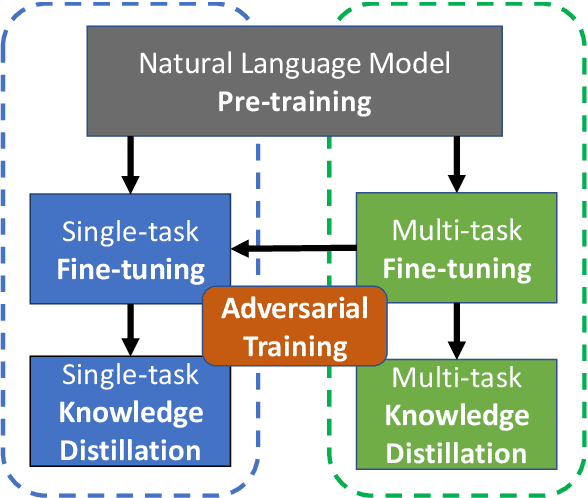
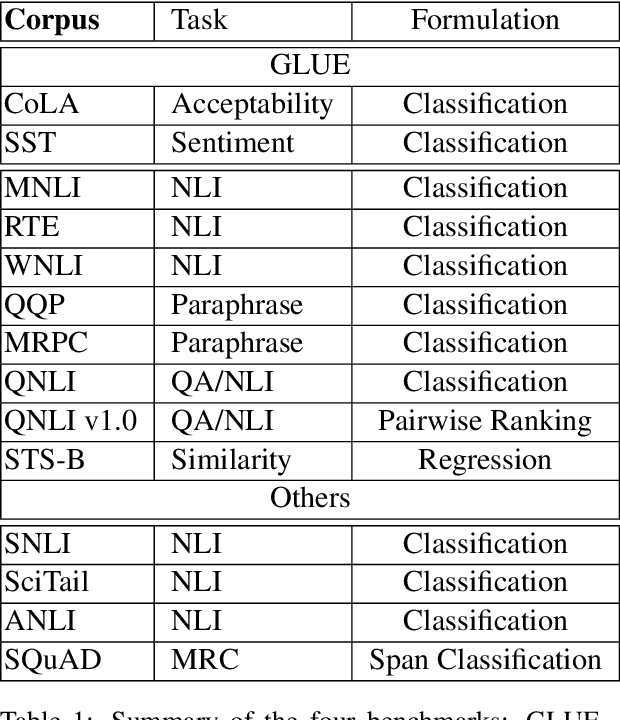
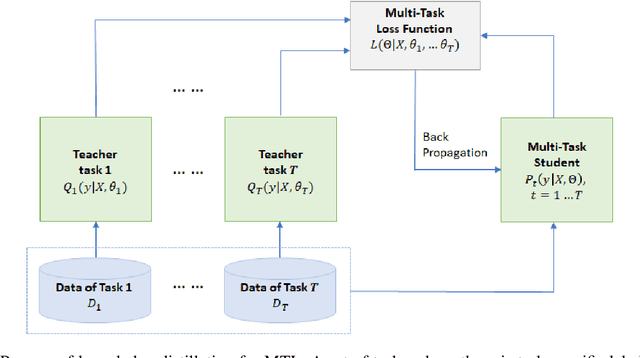
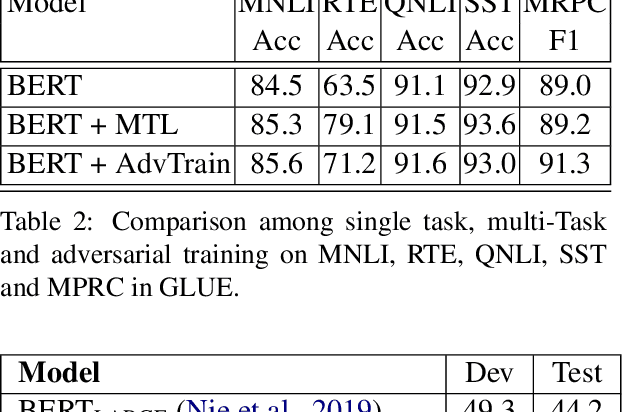
Abstract:We present MT-DNN, an open-source natural language understanding (NLU) toolkit that makes it easy for researchers and developers to train customized deep learning models. Built upon PyTorch and Transformers, MT-DNN is designed to facilitate rapid customization for a broad spectrum of NLU tasks, using a variety of objectives (classification, regression, structured prediction) and text encoders (e.g., RNNs, BERT, RoBERTa, UniLM). A unique feature of MT-DNN is its built-in support for robust and transferable learning using the adversarial multi-task learning paradigm. To enable efficient production deployment, MT-DNN supports multi-task knowledge distillation, which can substantially compress a deep neural model without significant performance drop. We demonstrate the effectiveness of MT-DNN on a wide range of NLU applications across general and biomedical domains. The software and pre-trained models will be publicly available at https://github.com/namisan/mt-dnn.
Semantic Parsing with Syntax- and Table-Aware SQL Generation
Apr 23, 2018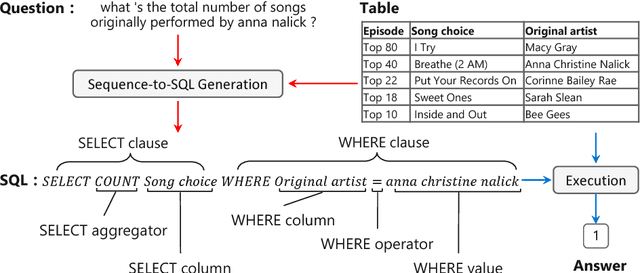
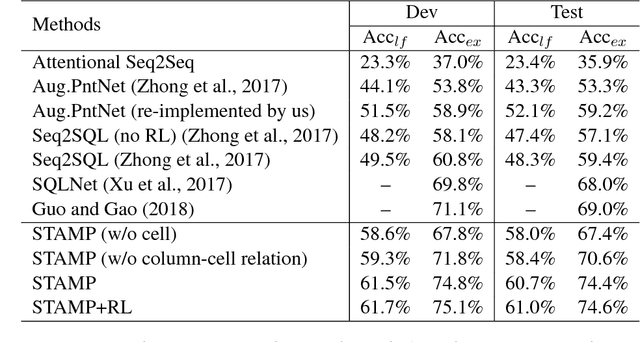
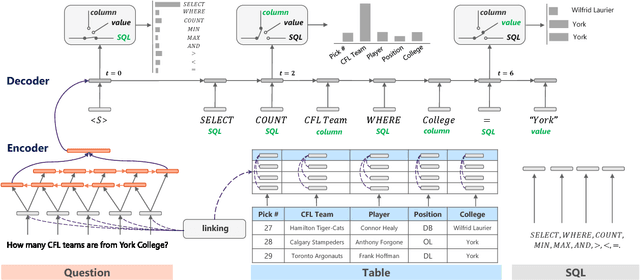
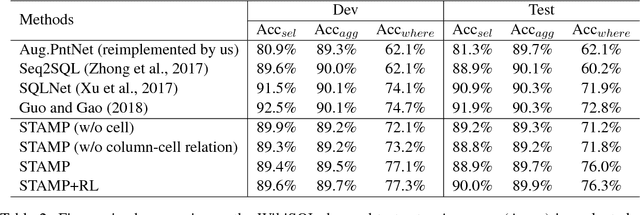
Abstract:We present a generative model to map natural language questions into SQL queries. Existing neural network based approaches typically generate a SQL query word-by-word, however, a large portion of the generated results are incorrect or not executable due to the mismatch between question words and table contents. Our approach addresses this problem by considering the structure of table and the syntax of SQL language. The quality of the generated SQL query is significantly improved through (1) learning to replicate content from column names, cells or SQL keywords; and (2) improving the generation of WHERE clause by leveraging the column-cell relation. Experiments are conducted on WikiSQL, a recently released dataset with the largest question-SQL pairs. Our approach significantly improves the state-of-the-art execution accuracy from 69.0% to 74.4%.
A Nested Attention Neural Hybrid Model for Grammatical Error Correction
Jul 10, 2017



Abstract:Grammatical error correction (GEC) systems strive to correct both global errors in word order and usage, and local errors in spelling and inflection. Further developing upon recent work on neural machine translation, we propose a new hybrid neural model with nested attention layers for GEC. Experiments show that the new model can effectively correct errors of both types by incorporating word and character-level information,and that the model significantly outperforms previous neural models for GEC as measured on the standard CoNLL-14 benchmark dataset. Further analysis also shows that the superiority of the proposed model can be largely attributed to the use of the nested attention mechanism, which has proven particularly effective in correcting local errors that involve small edits in orthography.
 Add to Chrome
Add to Chrome Add to Firefox
Add to Firefox Add to Edge
Add to Edge